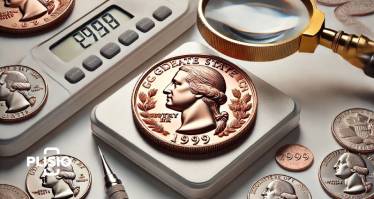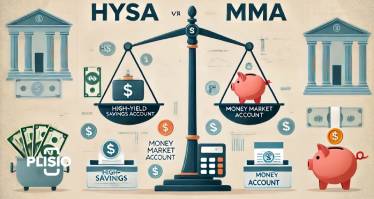France Currency

In France, the currency used is the Euro (€), which has been the official currency since January 1, 2002. The Euro replaced the French Franc, which had been the country's currency for many years. If you are planning to visit France, understanding how the Euro works will make your trip more convenient.
As a member of the European Union, France adopted the Euro to make trade and economic coordination with other EU countries easier. The Euro is now used in 19 of the 27 EU countries, known together as the Eurozone. This means that traveling across these countries does not require exchanging money, which simplifies tourism and business.
In this article, we'll explore the history of France's currency, from the Franc to the Euro, and share key facts about its evolution, exchange rates, and practical tips on handling money in France.
History of France's Currency: From Franc to Euro
France's currency history reflects its economic and political changes. Initially, France used a system with livres, sous, and deniers, which dates back to medieval times. After the French Revolution in 1795, France switched to the franc to simplify and stabilize its economy.
The franc, divided into 100 centimes, went through many changes, especially during events like the World Wars. In 1960, a new franc was introduced, worth 100 old francs, to counter inflation. Finally, in 2002, France adopted the Euro along with other EU countries, marking a shift from a national to a shared European currency.
The French Franc: History and Evolution
The French Franc has a long history dating back to the 8th century and was linked to the Livre Tournois, a unit of currency from that era. The franc name first appeared around 1360, representing coins worth one livre tournois, and it continued to evolve over the centuries.
The franc saw many changes influenced by economic and political events. After the French Revolution, the decimal franc was introduced in 1795, aligning France with a standard system that many other countries were adopting. During the Napoleonic era, the Franc germinal was established, and the franc became a key part of economic reforms.
In the 19th century, France joined the Latin Monetary Union, standardizing the franc with other European countries, a step towards economic integration. The franc faced devaluations during the World Wars and economic turmoil. In 1960, a new franc was introduced to stabilize the currency. Finally, the Euro replaced the franc in 1999, at a rate of 6.55957 francs to 1 Euro.
The Euro: France's Current Currency
The Euro became France's official currency in 2002, replacing the franc. The Euro is divided into 100 cents, with coins ranging from 1 cent to 2 Euros and banknotes from 5 to 500 Euros (though the 500 Euro note is no longer issued since 2019, it is still legal tender).
The Euro is used in 20 countries across Europe, and each country has unique designs on the coins' obverse sides. Coins are minted at national mints, while the European Central Bank oversees the overall currency policy.
Euro Banknotes: Design and Security Features
Euro banknotes, introduced in 1999, initially had a uniform design and were made of pure cotton. Later, the Europa series was introduced with improved security features. The next redesign of Euro banknotes is planned for 2024, with themes chosen through public voting.
How Inflation Affects the Euro's Buying Power in France
In France, the purchasing power of the Euro has varied significantly between 2007 and 2022. There was a notable drop in 2013, and inflation peaked in 2008 at 2.8%. Despite fluctuations, average household income in France has remained relatively stable since 2005.
The French central bank expects an economic recovery by 2025, with inflation decreasing and purchasing power improving. This is expected to boost consumer spending and economic growth. If you're interested in how inflation impacts travel costs or exchange rates, it is important to keep up to date with the latest information.
How to Use Currency in France: Cash and Digital Payments
The adoption of the Euro has made travel and business across Europe easier, as most people no longer need to exchange currencies when moving between Eurozone countries. In France, digital payment methods like credit cards, mobile payments, and online banking are widely used, especially in urban areas. Cash is still common for smaller transactions, especially in rural areas and among older people. For tourists, it is recommended to have a mix of cash and cards for convenience.
Is USD Accepted in France? Currency Exchange Tips
The Euro is the only currency used in France, and USD is not accepted. If you want to use USD, you need to exchange it for Euros at banks, exchange bureaus, or ATMs. Using a credit or debit card without foreign transaction fees is also an option. Knowing where to get the best currency exchange rates in France can save you money during your trip.
Best Ways to Exchange Currency in France
The easiest way to get Euros in France is to use an ATM or debit card, which usually gives you the best exchange rate. You can also exchange cash at banks or exchange bureaus, though banks often offer better rates. Always compare rates and fees before making a transaction. For visitors, it is helpful to know that airports, while convenient, may offer less favorable rates than banks or specialized exchange offices.
Where to Find the Best Currency Exchange Rates in France
You can exchange currency at banks, exchange offices, airports, and even some hotels. Banks usually offer the best rates, though they might charge a fee. Specialized exchange offices are available in major cities and tourist areas. It is always a good idea to compare rates and fees before exchanging money. For those looking for the best currency exchange options in France, online comparisons can help identify the most favorable rates.
Tips for Getting the Best Currency Exchange in France
When exchanging currency, make sure to check the exchange rate and any fees involved. Some places may not accept large Euro notes like 100 or 200 Euros. It is a good idea to carry smaller denominations for ease of use, especially for small purchases. When planning for your trip, you may want to know about the best currency exchange locations in Paris or other major cities to save time and effort.
Credit cards are widely accepted, but having some cash on hand is also useful. ATMs are available throughout the country, but they may have withdrawal fees. Be aware of using ATMs that are located in busy tourist areas as they might have higher fees.
Why Euros Are Better than USD for Traveling in France
Using Euros in France is more convenient than trying to use US dollars. Euros are accepted everywhere, and you can avoid extra currency conversion fees. Withdraw Euros from ATMs or use local banks for better rates. If you are wondering how to get the best exchange rates in France, using local bank ATMs is often the most cost-effective way.
How to Get the Best Exchange Rates in France
Exchange rates change constantly, so always check before exchanging currency. Remember that exchange bureaus may charge a fee or offer a lower rate, so compare options to get the best deal. Websites offering live exchange rate updates can be useful tools to help you get the most value.
Convenience of Using Euros for Payments in France
Using Euros while visiting France makes transactions smoother. Euros are widely accepted, and using them helps avoid conversion fees that come with using other currencies. For travelers looking for convenient payment options in France, credit and debit cards are also widely accepted in most places.
Understanding Fees When Exchanging Currency in France
Always be aware of the fees or commissions charged by currency exchange offices. Compare exchange rates and fees to get the best value when exchanging money. If you plan on making frequent transactions, choosing an exchange office with no commission fees can save you money.
Tips for Handling Money in France: Cash vs. Cards
When visiting France, always use Euros for payments. It is best to exchange money at banks or exchange offices for better rates and avoid hotels or airports where rates may be less favorable. Carry some cash for smaller purchases since not all places accept cards. To get the best value, tourists should compare currency exchange rates at different locations, such as in Paris or other popular tourist destinations.
Avoiding Scams When Exchanging Currency in France
France is generally safe, but it’s important to be cautious when handling money. Be aware of your surroundings, especially in crowded areas, and avoid displaying large amounts of cash. Only use secure ATMs, preferably during daylight hours.
When booking transportation, use licensed taxis from official stands to avoid being overcharged, and always check for hidden fees when booking accommodations.
By following these tips, you can avoid common currency mistakes and make the most of your trip to France. Remember to compare exchange rates, use secure ATMs, and plan ahead to enjoy a hassle-free experience.




